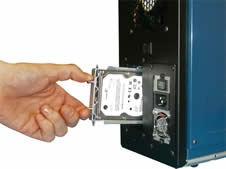It's a hot topic, maybe not for the general public, but certainly for many of my peers lately. I have yet to meet a Digital Evidence Technician or Analyst who has complained about having too much, hi-speed, secure, expandable & redundant shared storage. Just sayin'. 😎
Storage & workflow optimization go hand-in-hand when it comes to Digital & Multimedia Evidence.
SSDs & NVMe

PCIe-based SSDs & NVMe have changed the landscape over the last several years, as I predicted many years ago when ioFX was being developed. They're critical to local processing of massive amounts of data, and extremely helpful for a number of other OS and application tasks as well of course. But having one type of fast storage doesn't resolve much when it comes to a complete DME processing workflow, from acquisition through archiving.
We need storage that works efficiently for us at each stage of our workflow and we work for the government, so funding will always be an issue. Let's break this down and safe all of us tax payers a few dollars.
Tiered Storage Solutions
You thought I was going to say "Cloud is the answer!", didn't you? Well, it's only part of the answer, and only when operationally efficient and cost-effective for a particular stage of our workflow. Think Hot, Warm, and Cold data, just like they did back in the day when IBM and others were designing the first PCs. Hot, Warm, and Cold data. Simple.
Hot Data & Storage
Your active data. Data you're working with/on regularly. Typically, this should live on the fastest storage available to you. Active case data, evidence, video editing files, temporary application cache locations, etcetera. How much do you need typically, then add at least 100%. Don't forget redundancy.
Warm Data & Storage
Data you access occasionally, such as supporting files, network shares with office files, etcetera. Does not need to be the fastest, just reliable and redundant.
Cold Data & Storage
Archived data. Data that is rarely accessed, but needs to be kept long-term, such as digital evidence. This is typically the cheapest type of storage you'll use, such as LTO tape for archiving, when comparing storage size to cost. It's also typically the slowest data to read/recover. To this day there are large data centers that still use optical media for cold data storage of petabytes of data, so there are a lot of options, yes.
Storage Design Consultations
If you're designing a new storage solution and/or workflow for your lab and scratching your head about all of the options, feel free to Contact Me.
Be safe out there my friends. Let's make it a great day!
 MTFBWY
MTFBWY